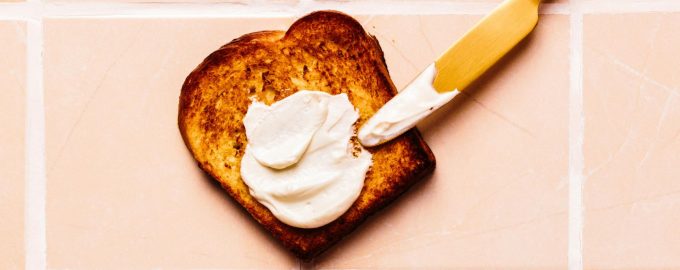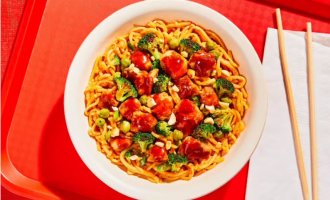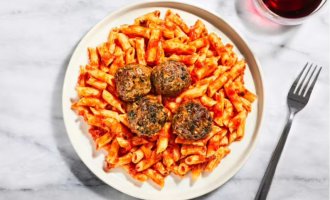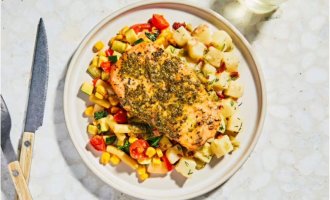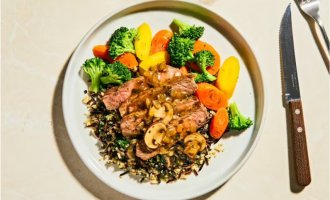Conflicting headlines about dairy are everywhere. From “Five Proven Health Benefits of Milk” to “Six Reasons Why you Should avoid Dairy at all Costs,” it’s hard to get the facts straight these days. Essentially everyone just wants an answer to one question: Is dairy bad for you?
“Dairy can be a source of important nutrients, vitamins and minerals, like protein, vitamin D, and calcium,” says Freshly’s head nutritionist Brooke Scheller, DCN, CNS. “However, all of the beneficial nutrients in dairy can also be found in other foods.”
Whether or not you’re lactose-intolerant (about 70% of people are) learning more about the pros and cons of dairy — and potentially limiting it from your diet even temporarily— may have some big benefits for your digestive and immune system.
Potential cons of dairy
“Some of us think that bloating, discomfort, or other digestive symptoms are normal, but they can absolutely be associated with a dairy intolerance,” says Scheller. “If you are sensitive, it can contribute to more low grade symptoms like inflammation, which might manifest as headaches, joint pain, or fatigue.”
Similar to the drug-like effect sugar can have on our system, dairy can also be addictive: “Our craving for dairy is connected to our emotions and hormones, specifically stress and nostalgia,” says Sam Lopane, Freshly’s Culinary Scientist. “Especially if we have fond memories associated with the experience of eating cheese, ice cream, and butter.” This addictive nature can have us going back for more ice cream despite swearing it off.
Potential benefits of limiting dairy
If you’re eating dairy regularly but not experiencing negative side effects, cheese on. However, if you’re not sure whether you have an intolerance, Scheller suggests taking a break. Try to limit or eliminate the amount of dairy you eat for anywhere from a few days to three weeks. You may notice you feel less bloat, have more regular digestion and see other improvements in skin, mood and energy.
“Food intolerance induces an immune system reaction,” says Scheller. “When you take the burden off of the body by eliminating a food trigger, in this case dairy, the immune system ideally will function more efficiently.” You can also monitor if you experience any negative side effects as you reintroduce dairy.
You may be thinking, but milk gives us strong bones—and it does! However other foods like leafy green veggies, broccoli, and beans are all rich sources of calcium and other important nutrients. Incorporating more vegetables into your diet means you’re eating more fiber, which helps to regulate the digestive system, and may also help reduce the risk of obesity, diabetes, and heart disease.
Dairy alternatives: Simple dairy-free swaps
Milk Alternatives:
There are a ton of dairy-free milk alternatives like almond, coconut, or the newest kid on the block, oat. Most of them are fortified with calcium to ensure you’re still getting enough of this crucial mineral. But watch out for added sugar. “Look for unsweetened versions of alternative milks to ensure you’re not replacing traditional dairy with a ton of added sugar,” says Scheller.
Butter Alternatives:
Adding butter to anything makes it taste better, right? That’s because in addition to the salty flavor, it’s got a rich, velvety mouthfeel from the blend of fats and dairy proteins. “We can create the same feel without butter by using plant-based alternatives that have naturally occurring saturated fats,” says Lopane. And, yes, there are healthy alternatives to butter that taste great. “Coconut oil is a common example: In the Freshly kitchen, he uses coconut and sunflower oil in our herbed spring peas (found in the Springtime Chicken Pilaf with Tarragon Peas). In your own kitchen, try avocado, olive or coconut oil to keep the healthy fats but lose the lactose.
Cheese Alternatives:
Instead of cheese on a sandwich, try avocado or a nut-based cheese to give you a creamy fat that delivers on cravings. You’d be surprised by how many types of alternatives there are now. Goat, Gruyere, cottage, and cream cheese alternatives all exist, made out of nuts instead of dairy. Nutritional yeast is also a great substitute for Parmesan cheese on your pasta, and even in recipes like mac and cheese.
